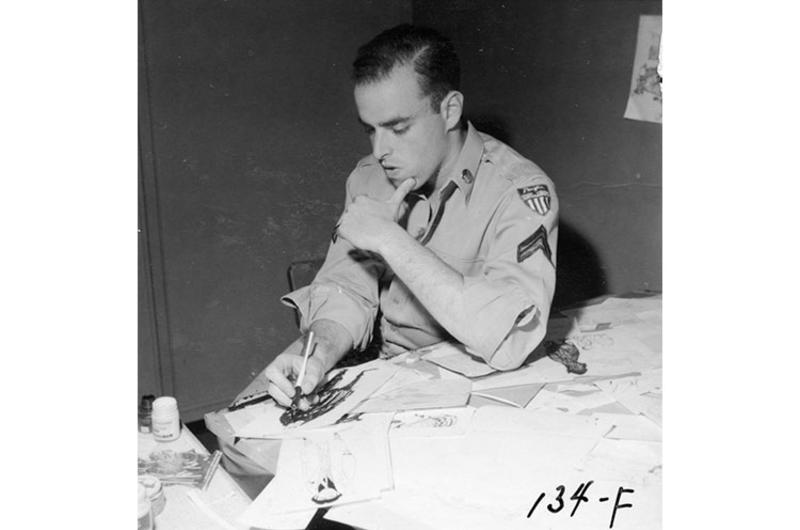Shel Silverstein, Artist

Shel Silverstein, artist (1954-1956), works on drawing cartoons at his desk. Shel Silverstein worked for the Pacific Stars and Stripes as a cartoonist from 1954 - 1956 and drew the cartoon "Take Ten".
By Aaron Kidd | Stars and Stripes
Author, composer and cartoonist Shel Silverstein served as a draftee on Stars and Stripes’ Pacific staff in the mid-1950s and said it was the catapult that launched him to success and wealth.
Silverstein wrote and illustrated such children’s classics as “The Giving Tree” and “A Light in the Attic,” but he was only an aspiring cartoonist when he arrived at the newspaper in 1953. He had never done any steady and serious cartooning until he began drawing daily panels about barracks life and field-soldiering.
"For a guy of my age and with my limited experience to suddenly have to turn out cartoons on a day-to-day deadline, the job was enormous,” he told the newspaper in 1969. "It was a great opportunity for me, and I blossomed.”
Silverstein became world famous for his cartoons, poetry and songs, such as the Grammy-winning “A Boy Named Sue” recorded by Johnny Cash. He recalled a Stars and Stripes cartoon that almost caused a collision with the Uniform Code of Military Justice.
Drawing a page of cartoons for April Fool's Day, he sketched a soldier holding out a mess kit with a slab of toast in it. A cook splashed dark matter over it, saying: "Today, it really is.”
The managing editor, required to inspect all Silverstein cartoons before they were printed, called him over and asked, "Shel, what does this mean?
"Well, you know, powdered milk, powdered eggs. Today it's the real thing. April Fool! Get it?”
That editor approved the cartoon. Many readers gasped over their breakfast on April Fool's Day. Or as one of Silverstein's contemporaries with the newspaper put it at the time: "That cartoon, shingle and all, flew in and out of the fan for several days.”
After leaving the Army, Silverstein struggled as a cartoonist until he heard about Hugh Hefner, who was putting together the first Playboy. Hefner hired Silverstein, who literally moved from ground floor to an executive suite in the Playboy Mansion.
Silverstein died of a heart attack in May 1999 in Key West, Fla. He was 68.



